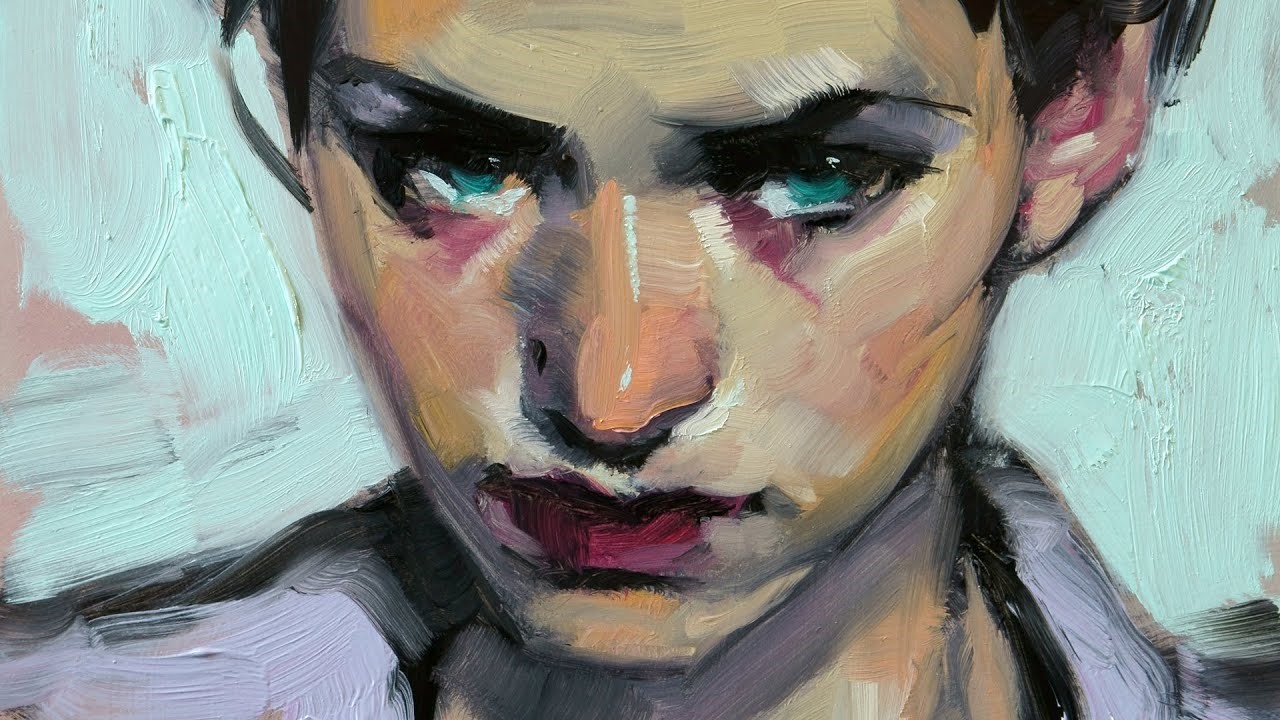Jared Ailstock is an established portrait painter based in New York City. He spends several days per week painting individuals who are willing to sit for him for a few hours at a time, and commission the finished artwork. His fluid and sensitive handling of the oils on canvas shows that he is not just a technician but also a sensitive observer of human behavior. Even with all the restrictions that come with working from life, Jared has been able to create amazing portraits by focusing on his sitter’s essence rather than just their physical appearance. His ability to see beyond the surface of his subject enables him to capture them as they truly are…on the inside. Throughout this article, you will get acquainted with some examples of Jared’s work as well as some tips for how you can paint like this too!

The Importance of Observation
One of the most crucial elements of portrait painting is observation. This is the act of carefully considering the subject and committing it to memory. It is not just looking but rather truly seeing what is before you. What you look at, and the way you look at it, will affect what you see. The more you train yourself to look at your subject with a painter’s eye, the more you will see. You will begin to notice things that you may not have noticed before such as the way light falls on the features, the color of the skin, and the texture of the hair. You may also notice the way your subject’s mood and energy changes throughout the sitting. This is important because it can affect the outcome of your portrait. Jared’s ability to notice these things, and to translate those observations into his portraits, has allowed him to create works that truly reflect his sitter. This is what makes his portraits so compelling.
Jared’s Portrait Painting Process
The first step in Jared’s portrait painting process is observing. He tries to spend at least 30 minutes getting a feel for his sitter in order to create a more personal and accurate painting. When Jared finishes looking, he then turns to observing the available light and how it falls on his sitter. This will help him decide what colors to use for their clothing and skin tone. After that, Jared studies the anatomy of his sitter’s face. While this is important for all portrait artists, Jared places a special emphasis on it due to his intuitive style of painting. Understanding how the features of the face are constructed will help him understand how to paint them. Lastly, he starts to sketch. This is Jared’s favorite part of the process because it allows him to work out any kinks or mistakes in his composition before he commits them to the painting.
Understanding Facial Anatomy
In order to create a truly accurate portrait, you must have a working understanding of facial anatomy. Every detail of the face, from the bones to the wrinkles, is there for a reason. If you get any of these details wrong, your portrait will not look authentic. Jared often uses photographs as references but he also studies anatomy books. In order to paint his sitter’s face as accurately as possible, he will look at diagrams and photos of the muscles, bones, and wrinkles in the face. He then commits these to memory so he can paint them in his portrait.
The Portrait Painting of Jared Ailstock- Seeing Beyond the Surface
Jared’s portrait painting of his friend, Violet, is a great example of his ability to see beyond the surface of his sitter and capture their true identity. Violet’s eyes are bright and playful, and her mouth is slightly open, revealing her tongue piercing. These things all hint at her playful, extroverted personality. Her hair is long and wild, and her eyebrows are thick and expressive. These things hint at Violet’s wild and free-spirited personality. Jared’s portrait captures all of this. It shows Violet’s energy and expressive eyebrows, and it uses light and shadow to accentuate her personality. As you can see, Jared’s portrait painting goes beyond physical appearance and captures Violet’s true identity.
Conclusion
Portrait painting is an exciting and challenging art form that has been practiced for thousands of years. It is a great way to both practice your painting skills and learn about the people in your life. Let your subjects know that you are interested in who they are as people and not just their appearance. Ask them questions about their interests and life so you can paint a portrait that reflects who they really are. With a little practice and the right approach, you will be well on your way to painting like Jared Ailstock. Whether you are painting from life or from a photograph, put these tips into practice and you will see a difference in your portraits.